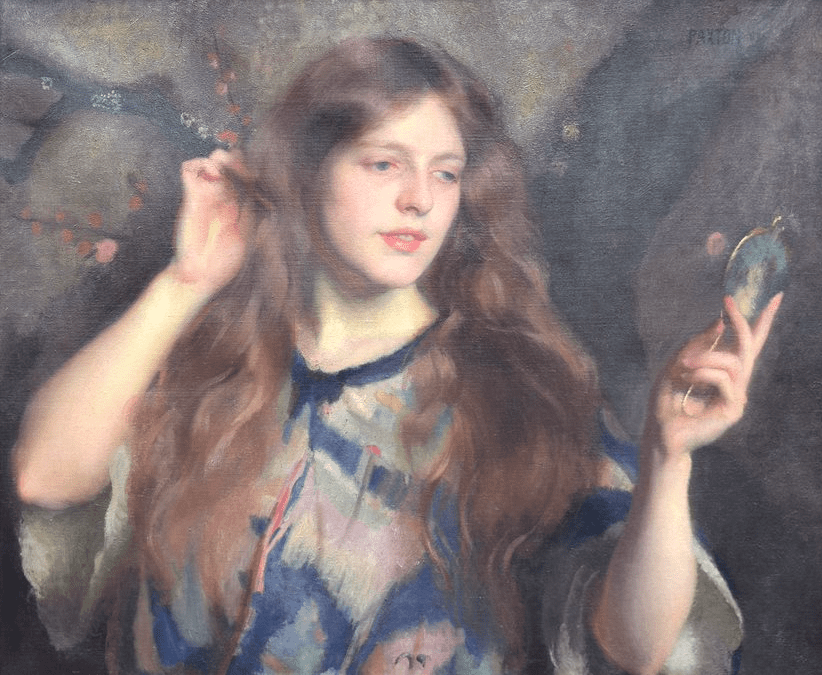Florence Gelo
Philadelphia, Pennsylvania, United States

In order to emphasize the role of the arts when teaching the humanities in medicine, I have often taken medical students, residents, and doctors to art museums to develop the art of looking. During one such program for medicine residents at the Reading Public Museum, we looked at a work of art to explore the nature and impact of suffering. The task was for them to look at a painting, describe what they saw, and offer their interpretation. The residents were guided to notice the subject matter and details of the painting, as well as formal elements like line, color, and texture. They were to engage with the painting by imagining what it was about and then reflect on thoughts and feelings about its content and composition. I urged them to use their eyes by asking, “What do you see?” and “Look again,” so they would stay focused, notice overlooked details, and avoid unfounded interpretations. They then discussed their experiences as a group.
The residents were invited to roam the galleries and select a painting that caught their eye, captured their curiosity, or that they felt drawn to. One group chose Girl with a Hand Mirror by William McGregor Paxton.
Paxton was a trained artist and teacher who painted wealthy women in the tranquil comfort of their homes. This particular painting shows a woman in a salmon, light green, and grey-blue patterned dressing gown. She has long brunette hair and a smile as she holds a hand mirror in her left hand, and with her right hand raised, she appears to be adoring her hair or adjusting it. The background is blurred. Looking at the painting closely over time invites a variety of narratives of a young woman seeing herself dressed in silk for the first time or gazing adoringly at a new hair style and surprised by textured layers. It matters not what she evaluates, only that she does.
One resident related that he was not sure that what she held in her hand was a mirror. Another speculated about the expression on her face. Another enjoyed the qualities of soft color and light. The group agreed that the painting was pleasant and easy to look at. During this conversation, a new thought came to me, a larger vision of the value of this painting to teach empathy and compassion.
The existence of mirrors dates back hundreds of years. Yet with every mirror, there came a moment when the mirror reflected the image in front of it for a first time. Most of us probably do not remember the first time we saw our image in a mirror, but there was a first time, and in that moment, each of us had thoughts and feelings about our reflected image.
The painting became, for me, an illustration of the moment when the doctor delivers “bad” news to a patient. The doctor giving a diagnosis is, in essence, holding up a mirror that allows the patient to see themselves with illness for the first time. I asked the group of residents one question: What is it the doctor wants the patient to see? The group was quiet. I talked about the importance of preparing before giving bad news and that one way to prepare is to remember a time when they were given bad news themselves, like remembering the disappointment of not making a sports team or receiving a rejection letter from their first-choice medical school. How could it have been easier to receive that news? I told the residents that I was inviting them to look inward and to recall their own feelings as a way to learn about empathy, the ability to understand the feelings of other people based on one’s own experience. “How did you feel in that moment?” can provide the raw material needed to encounter another empathically and respectfully. Planting this seed, the idea of sameness between doctor and patient, might stimulate residents to recognize the importance of delivering bad news with sensitivity and respect.
After leaving the museum, I reflected further on how I might use this painting in a future gallery lesson. I might have the residents pause and focus on the painting, then reflect on the value of a doctor pausing and focusing, taking time, before giving a patient bad news. A diagnosis is likely to cause a painful response. To learn that one cannot go back to one’s normal life can be devastating. In a matter of moments, the person becomes unfamiliar to him or herself. Once aware of this, the doctor can humanize the patient by pausing, slowing down, as they practiced in the museum, to see the patient as a person. As the patient takes on flesh, becomes embodied in the fullness of their humanity and no longer objectified, the doctor can deliver bad news with humility, honesty, and compassion. In this context, Girl with a Hand Mirror serves as a teaching tool, a useful way to raise and discuss this issue.
FLORENCE GELO is a medical humanities and behavioral science educator. She directed and produced “The HeART of Empathy: Using the Visual Arts in Medical Education,” and uses the visual arts as a teaching tool to enhance clinical skills. She has published numerous articles in professional journals about illness, death and dying.

Leave a Reply